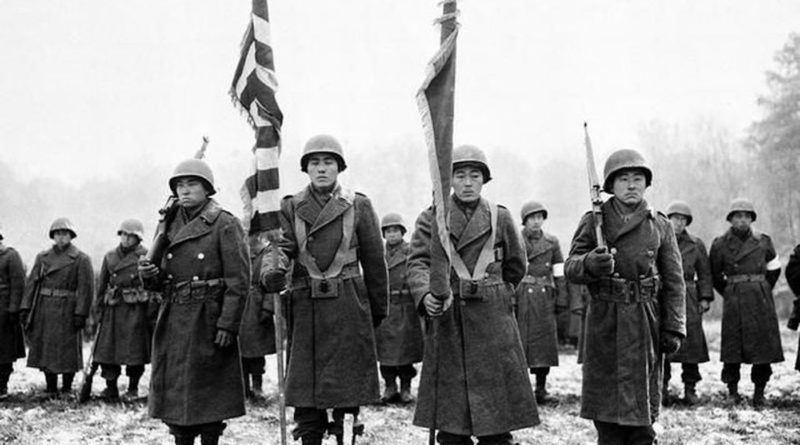442: Live with Honor, Die with Dignity
I have just got back from watching 442: Live with Honor, Die with Dignity, a documentary about the World War II 442nd infantry regiment made up mostly of Japanese-American “nissei”. Segregated due suspicions about their loyalties, the unit fought in some of the toughest battlegrounds in Europe and, while racking up casualties as devastating as their victories, went on to become the most decorated unit for its size and length of service in United States military history.
I highly recommend getting down to Salon Cinema to see it, or picking it up on DVD sometime. It’s particularly interesting to watch here in Japan, and as is so often the case concerning wartime films, in Hiroshima.
Although the Discovery channel style narration grates a little, the bulk of the film is made up of interviews with surviving members of the unit who are now in their 80s and 90s. It is striking that young men should throw themselves into defending a nation that initially told them that they could not be trusted to fight for it and locked them away in internment camps. After fighting long and hard to liberate Rome, they were not permitted to enter the city, so that the face of liberation would be white; yet they still fought on. The bravery of the veterans is beyond question and by the end of the film one is utterly convinced that they are all remarkable and sensitive human beings. As the daughter of one of the interviewees says, their testimonies amount to a legacy that we should ensure is not lost.
The history and testimonies raise all kinds of questions. Of nationality, ethnicity and discrimination. About the decades long psychological trauma that the battlefield leaves. Whether, as the narration suggests, the “nissei” (or anyone for that matter) were fighting for “America” or “just” for the nation in which they happened to be born. Much is made of the fact that their selfless sacrifice (at Biffontaine, the unit lost more than 800 troops ” rel=”noopener” target=”_blank”>to rescue 211 members of the “Lost Battalion” of 141st Regiment’s Texan 1st Battalion) did much to help the cause of Asian-Americans back at home; but should such sacrifice have been necessary to achieve rights that should be inalienable for all?
Actor George Takei of Star Trek fame, who spent time in the internment camps as a child, makes the point that the acts of those who went to war were far more “marketable” than the resistors who went to prison for protesting their civil rights as American born citizens. 442 veterans themselves describe the resistors as being as much heroes as themselves (most of the veterans actually go out of their way to stress that they do not view themselves as heroes), in the fight against prejudice.
The incredible history aside, I was most struck by how the film it brings the war down to a human scale. Watching black and white footage of fighter planes being shot down, it’s difficult to imagine that in those cockpits human lives are going up in flames before your eyes. Listening to the veterans stories makes it impossible to escape that these were real people, usually little more than kids, dying in horrible ways around them or at their own hands. They put names and faces to the numbers and crosses that fill fields across Europe and the world.


